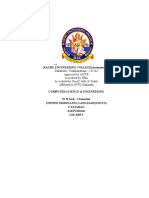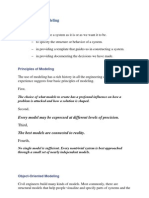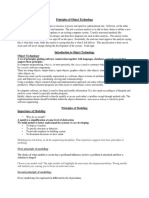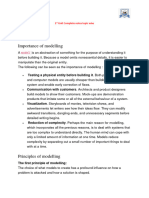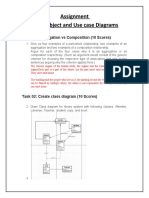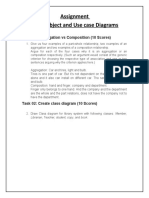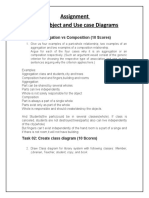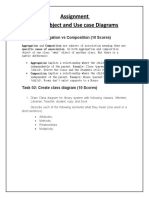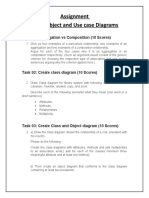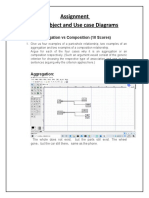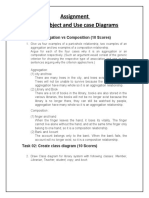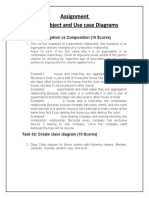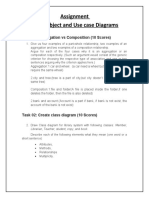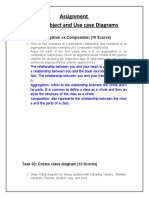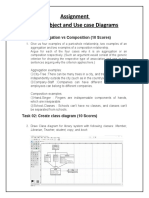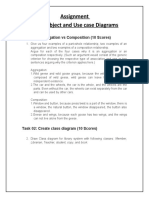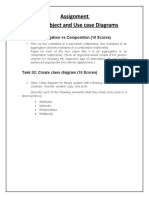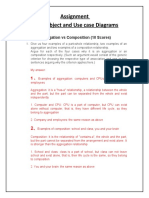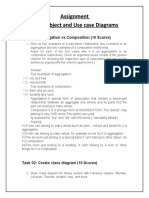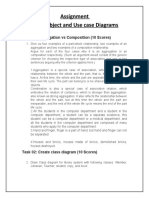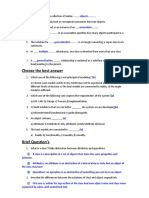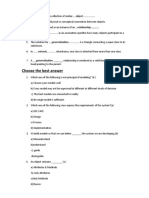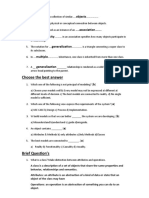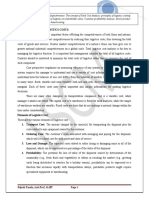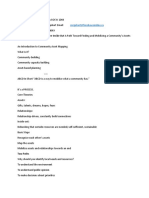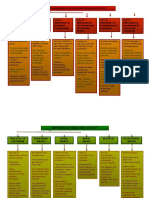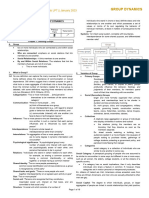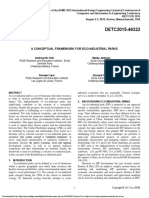0% found this document useful (0 votes)
96 views7 pagesSoftware Modeling Contents
This document provides an overview of the syllabus for an Object Oriented Analysis and Design course. It is a 15 week course covering 7 chapters. Week 9 covers chapter 1 on introduction and UML overview. Week 10 covers chapter 2 on basic structural modeling. Week 11 covers chapter 3 on class and object diagrams. Week 12 covers chapter 4 on use cases and activity diagrams. Week 13 covers chapter 5 on interaction diagrams. Week 14 covers chapter 6 on state machine diagrams. Week 15 covers chapter 7 on architectural modeling. The course aims to teach object oriented modeling concepts and help students analyze, design, and document system requirements and architecture.
Uploaded by
praba karanCopyright
© © All Rights Reserved
We take content rights seriously. If you suspect this is your content, claim it here.
Available Formats
Download as DOCX, PDF, TXT or read online on Scribd
0% found this document useful (0 votes)
96 views7 pagesSoftware Modeling Contents
This document provides an overview of the syllabus for an Object Oriented Analysis and Design course. It is a 15 week course covering 7 chapters. Week 9 covers chapter 1 on introduction and UML overview. Week 10 covers chapter 2 on basic structural modeling. Week 11 covers chapter 3 on class and object diagrams. Week 12 covers chapter 4 on use cases and activity diagrams. Week 13 covers chapter 5 on interaction diagrams. Week 14 covers chapter 6 on state machine diagrams. Week 15 covers chapter 7 on architectural modeling. The course aims to teach object oriented modeling concepts and help students analyze, design, and document system requirements and architecture.
Uploaded by
praba karanCopyright
© © All Rights Reserved
We take content rights seriously. If you suspect this is your content, claim it here.
Available Formats
Download as DOCX, PDF, TXT or read online on Scribd
/ 7
































